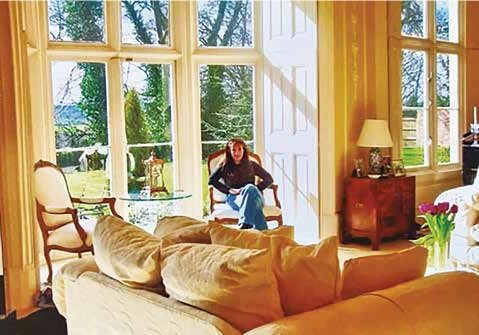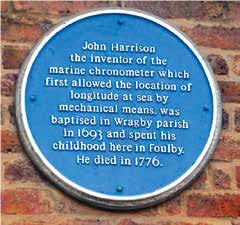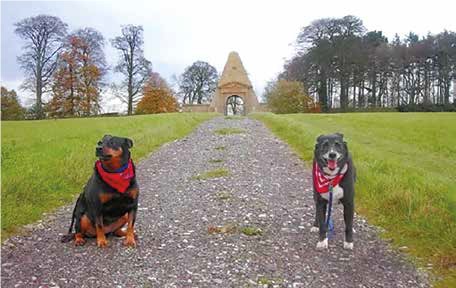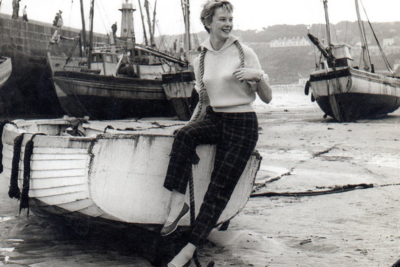
The Clock Men
by Victoria Splinder
Take a stroll through time with a husband consumed by clock work, a lost key and a new-found connection with inventor John Harrison.
Two men living three miles and three hundred years apart. I might never have made the connection between them, had I not been sitting in traffic when something compelled me to turn and read the Blue Plaque affixed to a nondescript house on Doncaster Road.
And just like that, everything clicked. The plaque, the clock, the book. My husband’s obsession with John Harrison. My husband’s obsession, how this all began.
My husband and his watches were enough to drive a girl insane. Each one is special and meaningful in its own way. A sentimental favourite, a business award, an antique with springs and mechanisms no longer made. Bored to death with the subject, I’d made a habit of tuning everything horological out, which is why I paid little attention to the grandfather clock in the billiard room at Nostell, in spite of the fact that each time I visited, the docent went out of her way to point it out.

Or the book on my husband’s nightstand for the past two months. A book I shifted around daily when tidying up, and yet still I didn’t take it in. Not even when my husband announced he wanted to visit Nostell, that there was a clock there he’d wanted to see. “Isn’t it beautiful?” My husband whispered, staring at one of the three ‘longcase’ clocks made by Harrison and his brother nearly three centuries before. “He was barely 20-years-old when he made this.” he exclaimed, telling me the eight-day clock with its wooden key was made from self-oiling woods and had an escapement that prevented the clock from stopping when wound.
“There’s a metal strip affixed to its pendulum, so changes in temperature and humidity won’t affect its swing,” he told me smugly. “Genius! Sheer genius! Not bad for a man with hardly any education,” he waxed on, telling me Harrison’s father, a carpenter at Nostell, taught him everything he knew.
“…the academics in London refusing to believe that a man with no formal education, a tinkerer from Yorkshire, had done what they could not.”
“And did you know Harrison was born and baptised at Nostell?” I looked at my husband; this was not an obsession we shared. Not wanting to dampen his enthusiasm, I told him to take his time admiring the clock and that I’d meet him in The Stables for lunch in an hour’s time. “I don’t get you,” my husband began as we sat in Trusty’s Den with bowls of mint pea soup. “There’s more to history than castles. This is the man who invented the H4!”
“The hydrogen bomb?”
“No, the marine chronometer. The sea watch, Captain Cook took on his second and third voyages worldwide, the first reliable method of establishing longitude at sea. A pocket-sized watch that lost only five seconds every six months. Surely you’ve read about the contest and the prize?” Over lunch, I learned about the contest established by Parliament in 1714 that consumed the next thirty years of Harrison’s life. A contest with a 20,000-pound prize to the first person to devise an accurate way of telling time at sea, so important to an expanding Empire. Without an accurate way of telling time and measuring distance, there was no way to know your exact location, making latitude and astronomical sightings essential issues of the day.
Over coffee, I heard about the H1, H2, and H3, Harrison’s initial attempts. Successful, but needing refinement- something to do with “balancing issues.” A second cup of coffee was dedicated to The Transatlantic Crossing, the trip that put the H4 to the ultimate test. The trip that secured the prize – except it didn’t, the academics in London refusing to believe that a man with no formal education, a tinkerer from Yorkshire, had done what they could not.
“Professional jealousy,” my husband remarked as we progressed to cup number three. Hyper-caffeinated, he continued relating the Odyssey, explaining that it wasn’t until a petition was made to King George III that Harrison could finally claim his prize. “How do you know all this?” “That book I’m reading, the one on my nightstand, you keep moving it around and losing my place.”
And so, we returned home and went about our life and forgot about anything horological, at least as far as I was concerned. Until one day when I lost the key to a French antique clock I once bought for my husband as an anniversary present; knowing his obsession, I was sure he would be pleased.
“You mean my clock is a fake? It’s not real?” I asked, picking at a raspberry scone.”
Except he wasn’t. And thus, the clock was designated mine. It was me who put it on the mantle, me who held the key. I stared at its tiny parts and mused over what it had seen on our many journeys. The Colorado Rockies were covered in snow, and the Connecticut woods were with turkey and doe. And now, standing in Yorkshire suspended in time, it needed a key to make it chime.
“Not a problem,” the clock man from the Yellow Pages told me. The clockman’s house was stunning and fine, full of hundreds of pieces keeping the best of time. A world is full of splendour, wonder, and beauty, a world full of delicate ringing and mechanical song. Taking my clock wrapped in a frayed towel, the clock man scuttled off to make tea and to find me a key, leaving me alone to peruse his gallery. I’d been wandering around, admiring his clocks, when suddenly I stopped dead in my tracks, having come across the one.
“It’s just like mine,” I told the clock man as he came through a door, balancing a tea service in one hand and my clock in the other. “Not quite,” he replied. “You mean my clock is a fake? It’s not real?” I asked, picking at a raspberry scone.
The clockman nodded and told me the one in his cabinet was the real McCoy, a French antique, while mine was but a mediocre imitation from a clockmaker in Albany, New York, a company that’d long ago gone belly up. It is pretty to look at, keeping good time, but not much in the way of a long-term investment, unlike owning a Turner.
“And that’s when it hit me when I realised I’d been walking in this great man’s footsteps in a place he once called home.”
A comment that made my ears perk up. Turner? I had a faux Turner, one I loved as much as if it were real. My faux Turner, which I’d purchased at the Pontefract Art Show, is a tableau I’d bought at a fraction of what it might have cost had it been real. “I know, you’ve told me.” I stared inquisitively at the man across the table and asked how that was possible when we’d just met. The clock man didn’t answer. He merely looked at his watch, told me he was “late for an important date,” and promptly showed me to the door.

Maggie and Trusty, with whom I’d walk daily at Nostell
Strange to say the least, nevertheless, I soon forgot about it until that day when I was stuck in traffic and saw that blue plaque mounted above the door. And that’s when it hit me: I’d been walking in this great man’s footsteps in a place he once called home. At Nostell, where I walked with my dogs daily.
I first met him in the parish church cemetery, running his hand over the old weathered stone. A stone angel guarding the soul of someone neither of us knew. Someone so ancient, so long ago forgotten, the tombstone inscription illegible, yielding no clue. Months later, standing beneath the Pyramid on the old carriage road, the portal to this magnificent estate, I thought about my two clockmen living three miles and 300 years apart. I considered the connection between them, the plaque, the clock, and the book, then decided I had it all wrong.
I was the linchpin; I was the key. I was married to a man with a time obsession who bought him a clock, then proceeded to lose its key. If it weren’t for me, none of our paths would’ve crossed; instead, now we’re linked for eternity.
NorthernLife March/April/May 24





